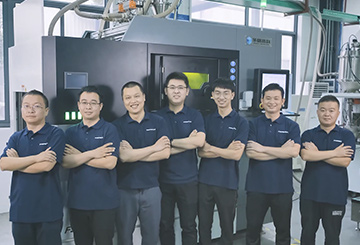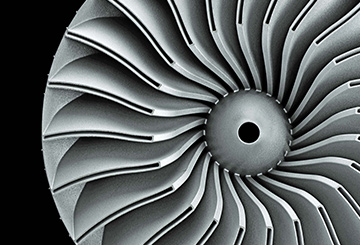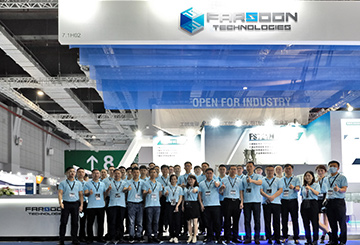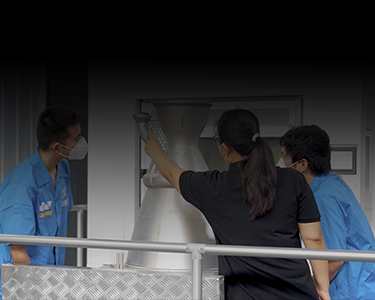In July 2021, commercial rocket launch company Deep Blue Aerospace completed China’s first reusable launch test with its launch vehicle “DBA-M”, known as the “Grass Hopper Jump”. Following this first success Deep Blue Aerospace executed in October 2021 the VTVL (vertical take-off and vertical landing) test, successfully conducting a 100-meter jump. On May 7th, 2022, Deep Blue Aerospace achieved a second VTVL test launch to an altitude of 1000 meters, the distance between landing point and target was within 0.5m. By the end of June 2022, the ignition test of the 20-ton-thrust liquid oxygen kerosene rocket engine “Thunder-R1”, which had been designed to deliver high performance while being economical for low volume production rockets, had been completed.
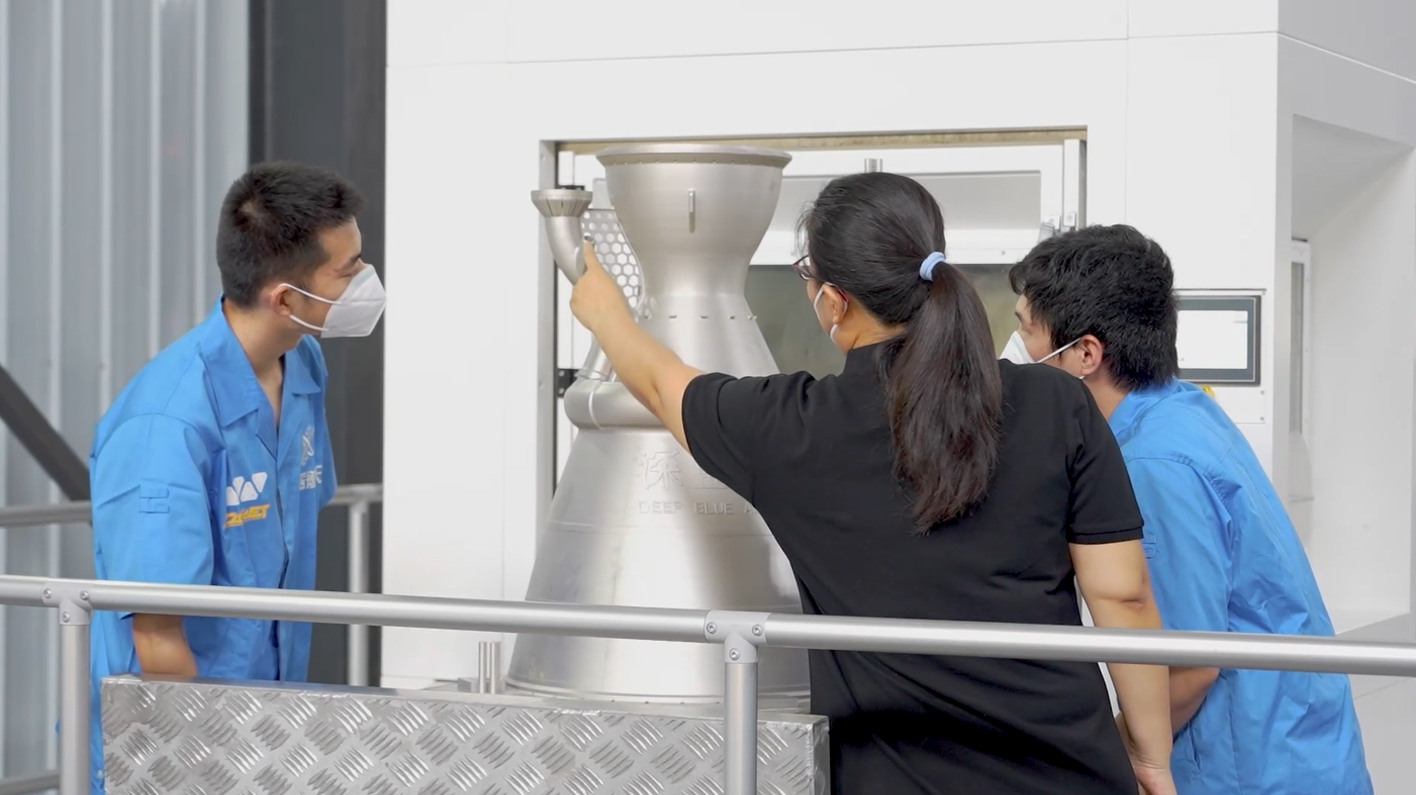
Figure 1: Deep Blue Aerospace exams as-printed combustion chamber from FS621M (courtesy Deep Blue Aerospace)
This rapid pace of development, achieving in a short time-frame, the completion of these launch tests means the Deep Blue Aerospace has become the 2nd company in the world to succeed in all low-altitude engineering tests of reusable liquid oxygen kerosene rockets, following US-based spacecraft manufacturer SpaceX.
Being one of the first commercial rocket manufacturers in China to use industrial metal 3D printing for key components engineering, Deep Blue Aerospace invested in Farsoon’s large-format metal system FS621M in 2022 to explore innovative manufacturing solutions for rocket engines.
“At Deep Blue, we produce over 80% of the key components in rocket engine using metal 3D printing.” said Dr. Tian Cailan, head of Additive Manufacturing of Deep Blue Aerospace, “Farsoon’s FS621M offers us the ability to rapidly manufacture large-sized engine parts featuring light-weight design, structural integration, improved performance and reliability; with only a fraction of the cost, labor and lead time compared to the traditional technologies.”
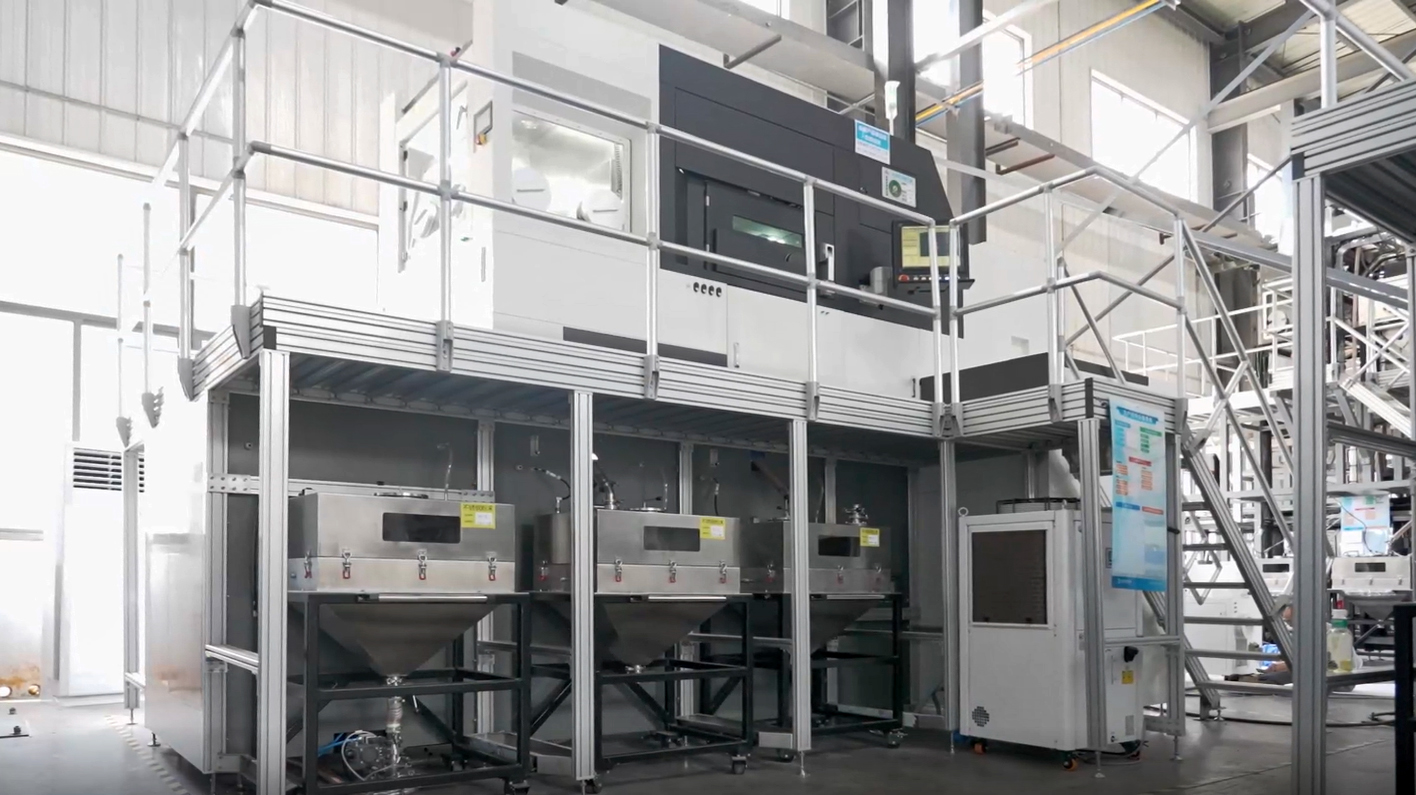
Figure 2: Farsoon FS621M system (courtesy Deep Blue Aerospace)
In 2022, Deep Blue Aerospace enhanced their batch production of single-piece, large-sized rocket engine combustion chambers using Farsoon’s FS621M system. The additive manufactured Inconel combustion chamber measures 780mm (30.7 inches) in height and 550mm (21.7 inches) in diameter. Major challenges include the size of the build, function integration, and detail resolution. The advanced additive manufacturing enabling many new innovations from Deep Blue engineers including consolidated design, light-weight lattice structures, and complicated geometries. Other features such as complex geometries with many hundreds of internal cooling ribs and channels are designated to promote combustion efficiency of the rocket engine. The FS621M also allows for economical production of oversized aerospace parts with an accelerated design-validation cycle by 80% compared to the conventional manufacturing process.
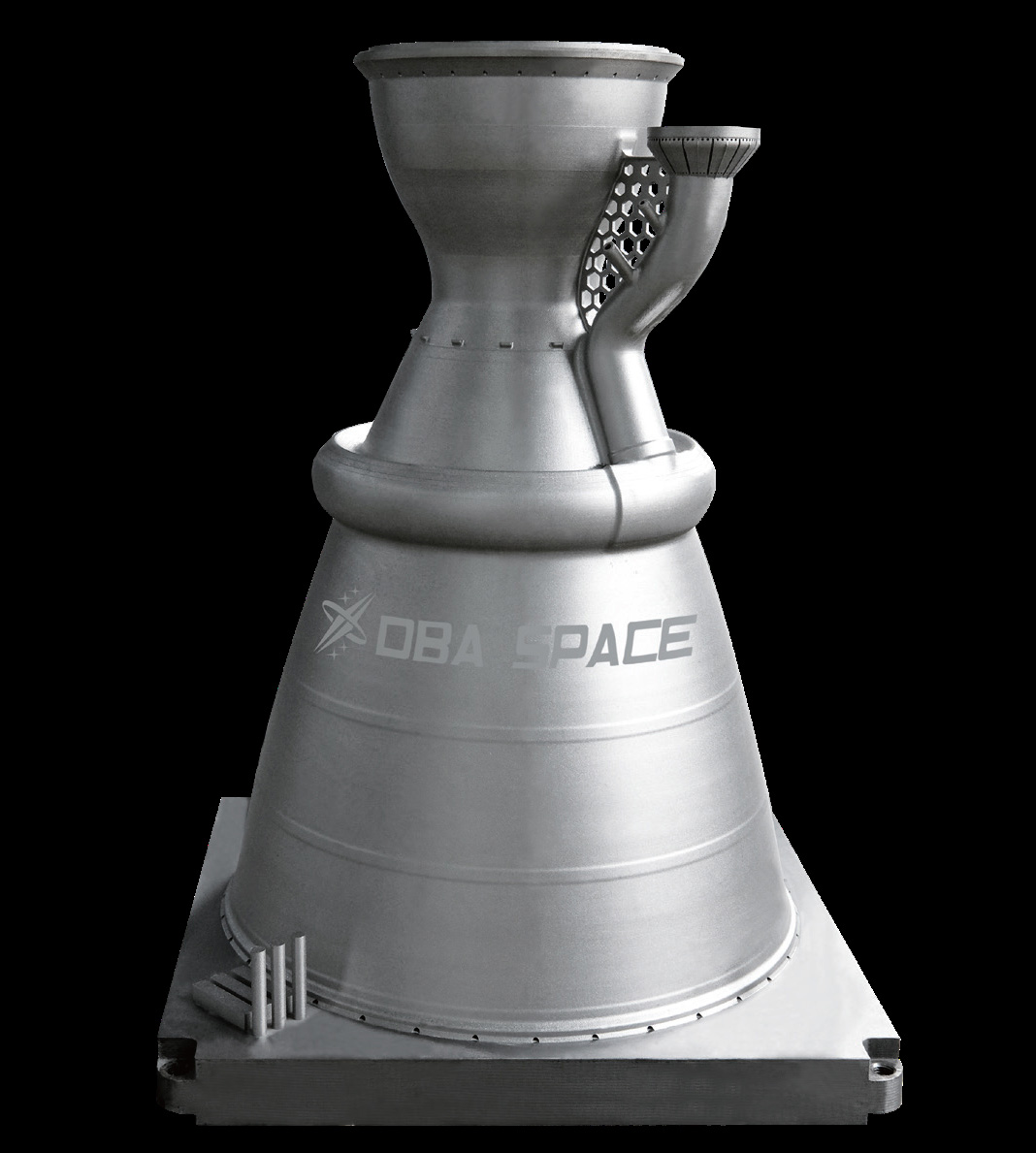
Figure 3: Rocket engine combustion chamber produced by FS621M (courtesy Deep Blue Aerospace)
“Being a key component of the rocket engine, the combustion chamber has to achieve the required performance, efficiency and reliability under the extreme operating conditions of heat and pressure,” says Dr. Tian, “We are fully convinced with the high quality, fast production speed, and operational stability delivered with Farsoon FS621M system. We are able to offer products that are significantly lighter, more repeatable, yet demonstrates much better properties during the functional test, which is essential to meet the demanding standards of aerospace industry.”
“For the next step, Deep Blue Aerospace will continue the VTVL launching test at a high-altitude, and start its very first orbital launch mission of the reusable full-scale carrier rocket.” Says Dr. Tian, “We have full confidence combing our innovative designs with the expertise of Farsoon, and keep pushing the boundaries in metal powder bed fusion technology for large-scale engine parts production.”
Farsoon is proud to contribute to space science and to demonstrate 3D printing as an innovative manufacturing method for a wider range of end-use applications in the aerospace industry. Farsoon Europe GmbH will be showcasing a variety of metal additive manufacturing applications at Formnext 2022 in Frankfurt. Customers interested are welcome to visit us at up-coming Formnext event below, or email us: globalinfo@farsoon.com for more details!
Formnext @ Frankfurt, Germany
Nov 15-18, 2022
Booth 11.1-D29
About Deep Blue Aerospace:
Jiangsu Deep Blue Aerospace Technology Co., Ltd. (DBA), which was founded in November 2016, is a high-tech commercial aerospace enterprise focusing on the research and development of liquid reusable launch vehicles and providing commercial launch services, with integrating scientific research, production, test and launch services. Headquartered in Nantong, Jiangsu Province, Deep Blue Aerospace also has set up rocket technology & liquid engine R&D centers in Beijing Yizhuang and testing base of rocket power system in Tongchuan, Shanxi Province. The company finished China first liquid oxygen and kerosene rocket 10m, 100m and 1000m VTVL tests in 9 months.
About Farsoon:
OPEN FOR INDUSTRY – Farsoon Technologies, founded in 2009, is a global manufacturer and supplier of industrial level polymer and metal laser sintering systems. Farsoon is the leading supplier of industrial AM technology in China with increasing growth in the international market. In 2017, Farsoon released the first of a new series of machines under the revolutionary Continuous Additive Manufacturing Solution (CAMS), and established Farsoon Technologies-Americas in Austin, Texas, USA. Farsoon is committed to developing AM towards its true manufacturing potential and providing customers with best-in-class systems, materials, software, applications and services. Learn more: www.farsoon.com
About Farsoon FS621M:
Announced in July 2020, the large-frame, multi-laser FS621M (build volume of 620 x 620 mm² with height 1100mm) metal system offers unparalleled production edge for large-scale applications that favors higher Z axis. As of today, the installation base of the FS621M system has reached over 40 units amongst aerospace and manufacturing customers.

